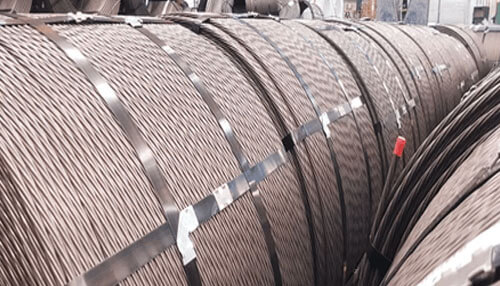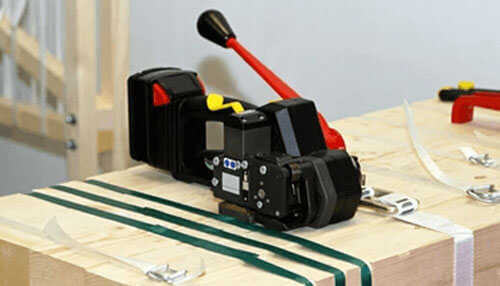Strapping is an essential piece of equipment in the shipping and logistics industry. Whether you’re securing items to a pallet, ensuring that boxes stay together or bundling up goods, strapping is key to good distribution – ensuring that items stay where you want them and giving you the best chance of getting your goods where they need to be intact. But which is best: plastic or steel? Let’s see…
Steel strapping
Steel is the material most commonly used for packaging and loading straps. It is used the world over – from securing construction materials to a trailer, to keeping pallets protected against spillage or unwanted movement, steel is the go-to strapping for a huge variety of industries.
The positives of steel strapping:
- Super high tensile strength
- Relatively unaffected by temperature extremes
- Does not stretch or allow for any movement
- Perfect for very heavy weights
The negatives of steel strapping:
- Expensive
- Dangerous if used incorrectly
Plastic strapping
Less common than steel strapping, but gaining in popularity, is plastic strapping. This is the perfect material for lower weights – so baling cardboard, bundling paper, reinforcing boxes and keeping white goods like refrigerators closed during transit, for example.
The positives of plastic strapping:
- Cost effective
- Water resistant
- Has just enough flexibility to absorb shocks without snapping
The negatives of plastic strapping:
- Much lower tensile strength than steel
- Poor weather resistance makes it unsuitable for sustained use outdoors
- Can deform and lose stability
So, which is best?
As you have probably gathered – this depends on what you are packaging/loading, and how it is going to be transported and stored. For anything that will be outdoors for more than a handful of hours (or even less in extreme sunlight or torrential rain) you should choose steel. Plastic can weaken in the heat or cold, become water damaged in the rain and deform or weaken due to ultraviolet rays. But for anything delicate that could be damaged by the strap itself, you’ll need plastic.
Steel straps are unforgiving and sharp – if you use them on a cardboard box, they will inevitably damage the box and probably the contents. The steel will also cut into almost anything if you over tension it – something that is easily done, particularly if you are inexperienced or under-trained. On the other hand – if your load is itself sharp or there is a good chance it will wear away at or cut through weaker strapping – you’ll definitely want to avoid plastic.
If you are shipping straight to consumers then plastic is always the way to go – it’s unlikely that your recipient will have the tools to deal with steel strapping, and it can be extremely dangerous if removed incorrectly as the tensed steel can snap back and cut flesh very easily.
In conclusion…
When you are selecting your strapping, you need to think about:
- Load weight and dimensions
- Load material and if it will damage or be damaged by a certain strap type
- Transport/storage conditions and duration
- Costs – both the strapping itself and the tools needed to use/remove it
- Health and safety
- The recipient and if they can safely remove the strapping
Author Bio:
First Mats started life as safety matting specialists, but have since expanded to become a complete industrial and commercial supplies company. The focus of First Mats is to provide safety-focused products that improve the wellbeing of staff through quality approved products, backed up by extensive knowledge. www.firstmats.co.uk




